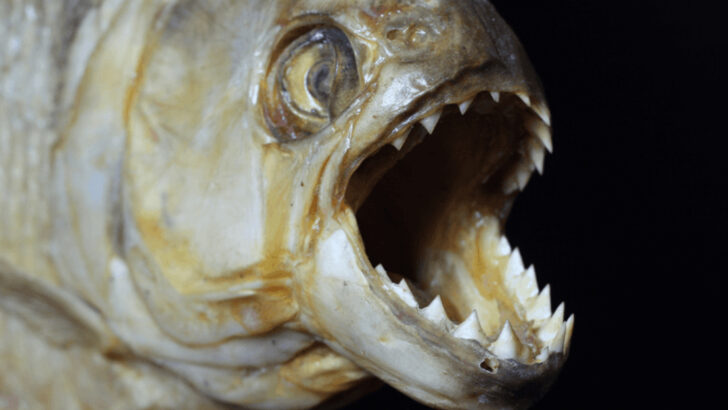Piranhas aren’t mindless killers. They’re just really misunderstood.
Thanks to decades of Hollywood nonsense, these fish have been painted as bloodthirsty monsters that can strip a cow to the bone in seconds. Dramatic? Yes. True? Not even close.
Behind the razor teeth and intense stare is a creature that’s way more complex than the horror movies let on.
They can be shy. They spook easily. And get this—they’re not even the top predators in their rivers.
That’s right. The fish you’ve been taught to fear might just be the ones doing the fearing.
We’re diving into 13 facts that might just flip everything you thought you knew about piranhas on its head.
Because there’s a lot more to these river dwellers than snapping jaws and scary music
The Real Diet of Piranhas
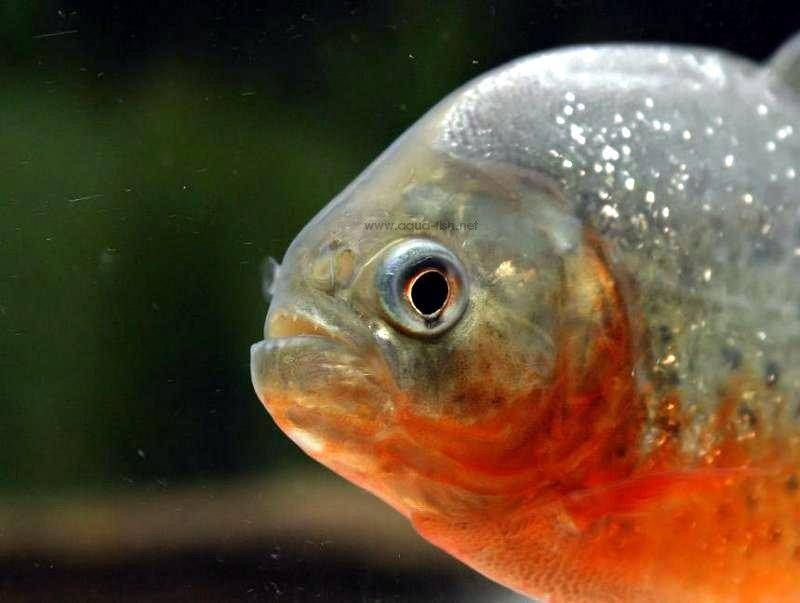
Contrary to popular belief, piranhas are not ruthless carnivores. These fish are actually omnivorous, with a diet consisting of fish, plant material, and even fruit.
Research shows that piranhas feed on seeds and aquatic plants, making them essential to their ecosystem. A typical piranha meal might include insects, crustaceans, and carrion. While they do consume meat, their reputation as aggressive hunters is largely exaggerated.
This balanced diet allows them to thrive in diverse habitats across South American rivers. Understanding their varied diet helps dispel myths about piranhas’ ferocity. Instead of fearsome predators, think of them as adaptable feeders.
Piranhas’ Social Structure

Piranhas are known for their strong sense of community. Often found in shoals, they swim together for protection rather than hunting.
This social behavior reduces the risk of individual piranhas falling prey to larger predators. Their group dynamics are fascinating, with organized swimming patterns and subtle communication through body language.
Scientists believe this shoaling behavior also aids in finding food, as a large group can cover more area. Watching a shoal move in unison is a mesmerizing sight, showcasing the cooperative nature of these often misunderstood fish. Such social traits are more common in piranhas than solitary aggression.
Unique Teeth Structure
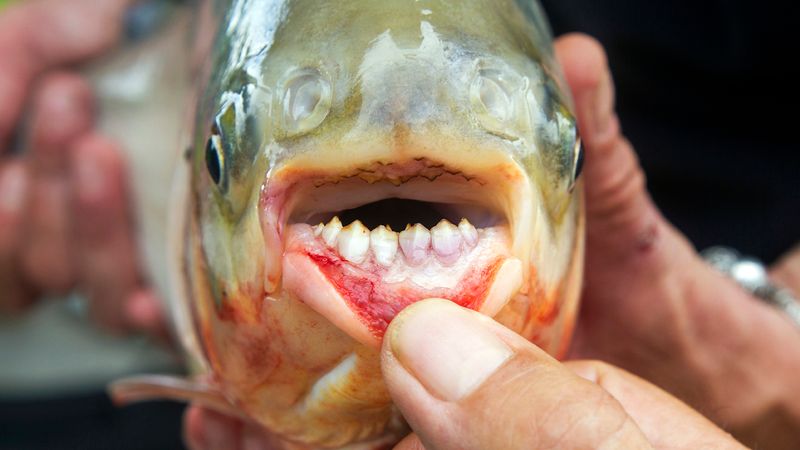
One of the most distinctive features of piranhas is their teeth. These razor-sharp, triangular teeth are perfectly designed for slicing through flesh. Interestingly, piranhas lose and regrow their teeth in quarters, ensuring they can always feed efficiently.
The enamel of their teeth is incredibly strong, matching the hardness of sharks’. This unique dental structure is an excellent evolutionary adaptation, allowing them to maintain their diet without interruption.
Despite their fearsome appearance, the teeth are primarily used for defense and scavenging. In reality, they pose little threat to humans unless provoked or endangered.
Piranhas in Pop Culture
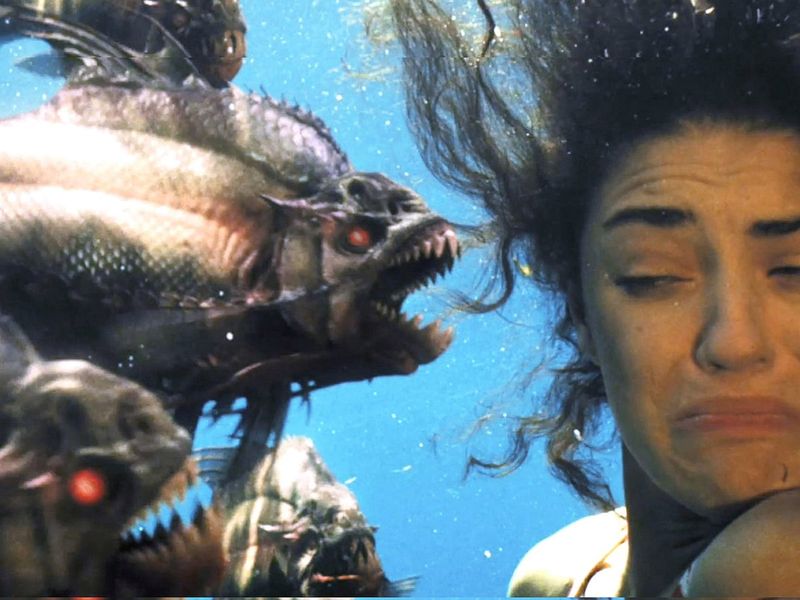
Piranhas have long been depicted in popular culture as merciless creatures. Films and books often exaggerate their aggression, contributing to their fearsome reputation.
This portrayal began with horror movies in the 1970s, cementing their status as aquatic villains. In reality, such depictions are far from accurate. Piranhas are typically shy and avoid humans, only attacking when threatened.
The exaggeration in media has led to misconceptions about their true nature. While they make for thrilling stories, these narratives overshadow the ecological importance of piranhas in their natural habitat. Their real-life behavior is far less sinister.
Diversity Among Species
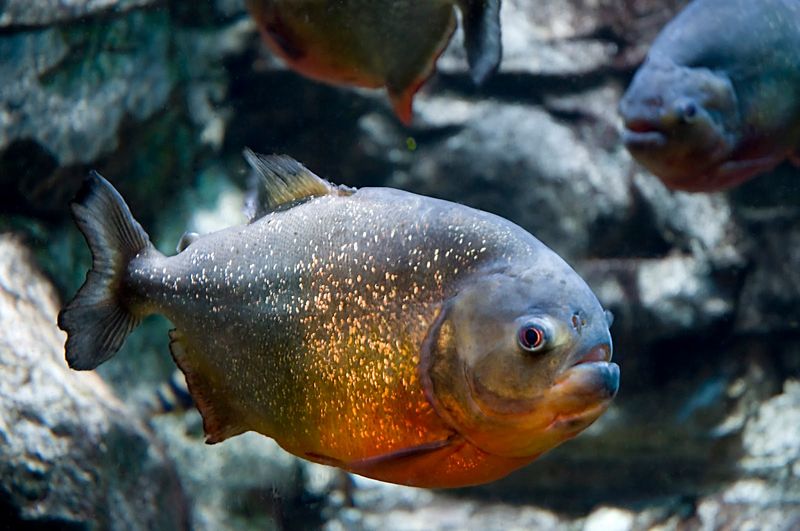
There are over 30 species of piranhas, each with unique characteristics. These species vary in size, color, and habitat preferences, ranging from the infamous red-bellied piranha to the lesser-known wimple piranha.
This diversity allows them to inhabit various environments, from fast-flowing rivers to quiet lakes. Each species adapts differently to its surroundings, with variations in diet and behavior. This adaptability is a testament to their evolutionary success in South America.
Exploring these differences reveals the complexity within the piranha family, showcasing more than just their notorious reputation. Their diversity is a key to their survival.
Myth of Feeding Frenzies
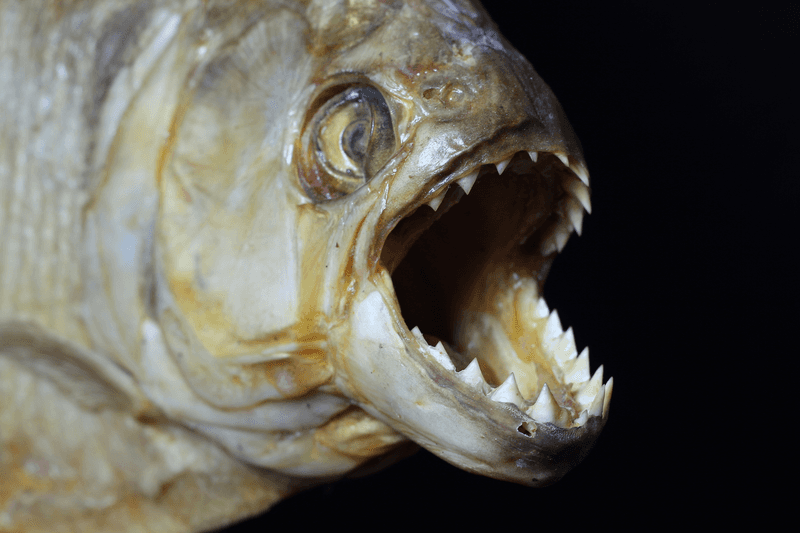
The idea of piranhas engaging in feeding frenzies is largely a myth. While they are capable of rapid feeding, such events are rare and typically occur only under extreme conditions.
Most piranhas prefer scavenging or preying on weak or injured animals. Their feeding is generally organized, avoiding unnecessary energy expenditure. The frenzy myth likely arose from isolated incidents or exaggerated stories. In reality, piranhas pose little threat to humans, and attacks are uncommon.
This misconception has contributed to their fearsome image, overshadowing their true behavior as opportunistic feeders. Their actual feeding habits are much more subdued.
Piranhas’ Ecological Role
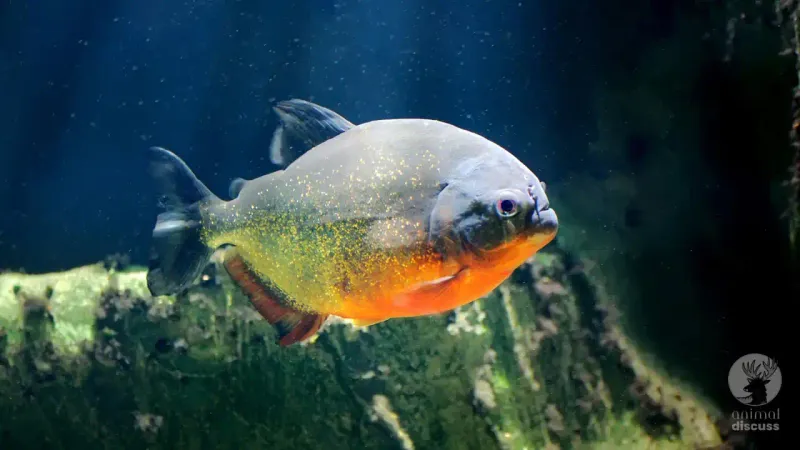
Piranhas play a crucial role in maintaining the health of their ecosystems. As both predators and scavengers, they help control fish populations and clean up dead organic matter.
This dual role is vital for nutrient recycling and sustaining biodiversity in South American rivers. Their presence ensures that ecosystems remain balanced, preventing the overpopulation of certain species. Piranhas’ interactions with other aquatic life forms demonstrate their importance far beyond their infamous reputation.
They are integral to the intricate web of life in their habitats, highlighting their significance in ecological studies and conservation efforts. Their role goes beyond predation.
Communication Underwater
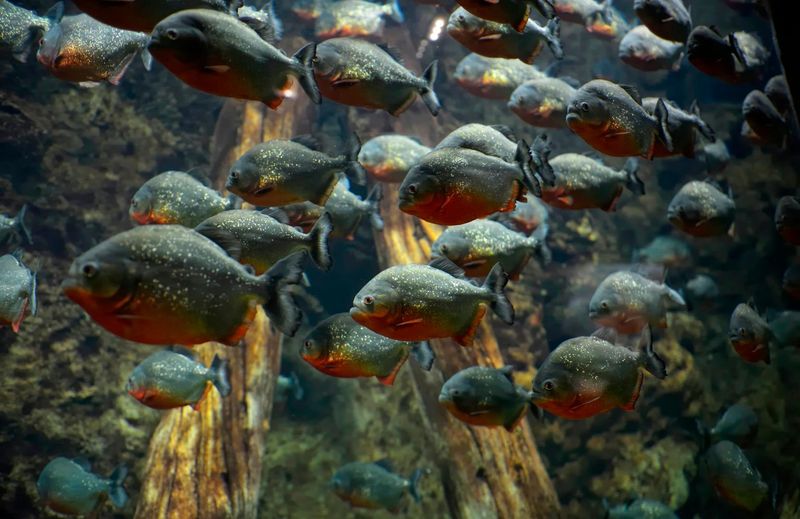
Piranhas have a surprising ability to communicate underwater. They use a combination of sounds, movements, and body language to convey messages within their shoals.
Scientists have identified different sounds associated with aggression, mating, and alert signals. This complex communication system helps them coordinate during feeding or when facing threats. Such interactions reveal a sophisticated side of piranha behavior, challenging the notion of mindless aggression.
Understanding how they communicate offers insights into their social structures and survival strategies. It paints a picture of piranhas as intelligent and social creatures, rather than mere predators of the aquatic world.
Piranhas as a Food Source

In many parts of South America, piranhas are not only feared but also valued as a food source. Local communities catch them for their meat, which is considered a delicacy in some regions.
Piranhas are often grilled or cooked in stews, providing a source of protein for villages near the rivers. This culinary use underscores the economic and cultural importance of piranhas to local populations.
The practice of fishing and consuming piranhas reflects their integration into human life beyond myths and legends. It shows how these fish contribute to the livelihoods of many, despite their notorious image.
Adaptation to Environment

Piranhas have adapted marvelously to various environments. Found in rivers, lakes, and even flooded forests, their adaptability is remarkable.
They thrive in different water conditions, showcasing their resilience and evolutionary success. Temperature changes, water levels, and habitat types do not deter them. These fish adjust their behavior and diet accordingly, ensuring survival.
This adaptability also allows them to colonize new areas, aiding in their widespread presence across the continent. Piranhas exemplify nature’s ability to adapt and persist, thriving where other species might falter. Their success is a testament to their resilience and tenacity in diverse habitats.
Piranhas and Human Interaction

Human interaction with piranhas is more nuanced than the horror stories suggest. In regions where piranhas are common, they coexist with local populations.
Fishermen often catch them for food or trade, and some communities even engage in piranha fishing tourism. While piranhas can be dangerous, attacks are rare and usually provoked. Understanding and respecting their habitat reduces risks and allows harmonious coexistence.
These interactions reveal a side of piranhas not often seen in sensational media. They highlight the balance between humans and nature, showing that fear is often based on misunderstanding rather than fact.
Piranhas’ Lifespan and Growth
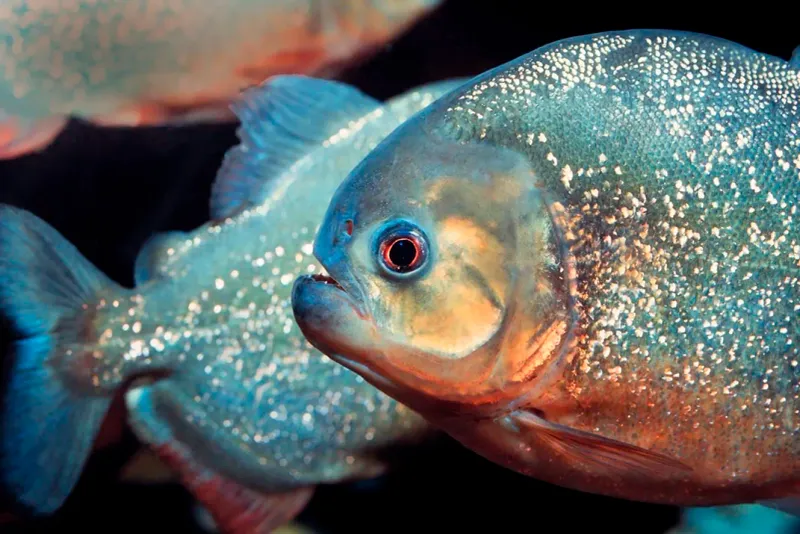
Piranhas have an intriguing lifecycle, with a lifespan of up to 10 years in the wild. Growth rates vary among species, influenced by environmental factors.
Young piranhas mature rapidly, reaching full size within a few years. Their growth is closely tied to food availability and habitat conditions. Understanding their lifecycle provides insights into their survival strategies and evolutionary success.
While many view piranhas as short-lived, their ability to live a decade or more is a testament to their resilience. This longevity, coupled with their rapid growth, ensures that piranhas remain a persistent presence in their ecosystems.
Conservation Status and Efforts

Piranhas’ conservation status varies across regions. Some species face threats from habitat destruction, pollution, and overfishing.
Conservation efforts aim to preserve their natural habitats and maintain population levels. Protecting piranhas is crucial not only for their survival but also for the ecosystems they inhabit. Conservationists work to educate communities on sustainable fishing practices and the ecological importance of piranhas.
These efforts highlight the need for a balanced approach to human interaction with these fish. Ensuring their future requires collaboration and awareness, safeguarding both piranhas and the biodiversity of South American waterways.

